Your Stories: Photographing Cemeteries in Malaysia
Earlier this month, we shared some great ways to celebrate Family History month. One suggestion was to plan a trip to the cemetery, a fun activity to explore the outdoors and to take in some family history. To help inspire your next cemetery field trip, Geni user Georgette Tan shares her experiences photographing cemeteries in her country of Malaysia.
Born in Sarawak in East Malaysia, Georgette works as a journalist with the local English daily, but has always fantasized about writing a novel, building a tiny house or opening an animal sanctuary. Family history was one subject that hadn’t really held her interest.
“It’s probably a combination of how my family is extremely private and stayed out of everyone else’s business, and how there’s stuff that people rather forget so nobody talks about it.”
And she still finds it to be difficult today.
“Even now that I’m taking photos of graveyards and wondering about my own family history, it’s a difficult topic to bring up. When I discovered Geni.com years ago, it was the closest I’ve ever come to getting names on record.”
Before starting her project to photograph graves, Georgette had a “morbid fascination for death, the afterlife and things related to it.” She shares,
“There’s so much taboo about it in certain cultures, and nearly every culture has ghosts attached to their graveyards. I just wanted to see if it was really that scary, but it was one of the most peaceful places I’ve ever visited.”
She’s already visited numerous graveyards in her own city and in Penang (West Malaysia), where she visited the Northam Road Cemetery or Old Protestant cemetery that is over 200 years old. Many of these visits were well before she began documenting the graves.
A panoramic view of St. Joseph’s Cemetery, as seen from its highest point.
“There’s a wealth of cultures in my country with their own unique cemeteries, but I’ve only visited the old Catholic and Angelican ones because they are more accessible (location and language). The new cemeteries tend to be miles outside the city. The oldest Chinese cemetery (within city limits) rambles on for miles and I’m not ready to tackle that yet. Not without a guide.”
That experience came in handy after Geni announced a partnership with BillionGraves to photograph the world’s cemeteries. Georgette was one of the first users to join the cause and join the BillionGraves Team portal as a collaborator.
A friend photographing a headstone at the WWII Heroes Graveyard.
“Photographing it came naturally since I wanted to show people what it was like. It also led to me wondering who these people were when they were alive and what their lives were like. When I heard of BillionGraves via Geni, I jumped at it because I always wanted to create a record of our graveyards. I didn’t have a coherent way of organizing it until now.”
Gravestones play an important role in linking us to our past, and now we finally have the necessary tools to document and preserve these headstones all around the world for future generations.
“I try to transcribe as many of my own photos as possible, especially the ones with naming conventions that are unique to this region. Sometimes it’s hard for a non-Asian to tell where our surnames are because it’s not technically the last word in the name.
One of the first in her city to work on such a project on BillionGraves, Georgette understands it’s a race against time to document these invaluable historical resources.
“For me, it’s not a race to photograph or transcribe the most headstones. I don’t care about the number game. It’s a race to document our city’s old historic graveyards before they crumble away. Some of these stones are over 150 years old, some already gone or illegible. If they’re stone, there’s a good chance they’re still standing, but I’ve come across wooden markers that have rotted away because the family never got around to getting a headstone.”
While it’s always fun to take along a friend, Georgette finds it is not always possible with their differing schedules.
“I’ve gotten two of my friends to help out during a couple of separate outings to smaller cemeteries that I wanted to finish documenting in one visit. It’s hard to organize these trips because I’m off work during the week and everyone else is only free on weekends. I usually go alone.”
However, sometimes it is really handy to have someone tag along. While the cemeteries are not spooky themselves, Georgette has had a couple of scares.
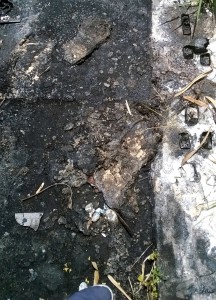
Footprints are left in a combination of mud, wax and moisture, a concoction that can prove hazardous to the unwary.
“All my harrowing graveyard stories involve nearly slipping in a mixture of wax and mud. The cemeteries here are not maintained, other than a little grass-cutting every now and then. Some of the graves still get occasional visitors, who leave candles burning at the base until it burns itself out. The wax flows down into the dirt. During rain, it turns into a waxy muck. Sometimes I don’t notice it until I step in it. This one time, I took two steps into a puddle of it and got stuck. I was afraid to move in case I slipped and fell, and there were not a lot of places to fall without hitting the edge of a box or bedstead. Fortunately, I came with a friend so I just wailed a bit until she rescued me.”
The graveyards with great historical value are the most interesting for Georgette. She recently visited with her friend the Brooke Family Graveyard on the grounds of Fort Margherita. Here, four members of the Brooke family were buried.
“The first three consisted of the two wives of one Captain John Brooke Johnson-Brooke, and the young son of the first wife. The plaque for the second wife – Julia Caroline Welstead (d. 1862) – was set upside down in the plinth. I did some digging and found a 1986 newspaper article which talked about it but they also had no solid ideas. There’s some documentation saying that there was a stillborn child buried there as well but there was no headstone. For a while, the tomb in the old site was maintained by a mysterious guardian. I’m not sure if they ever figured out who it was. The fourth Brooke to be interred here was Anthony Brooke (d. 2011), the nephew of the third and final White Rajah, Vyner Brooke. Anthony would have been Vyner’s successor if the monarchy was not abolished. It was his last wish that his ashes be buried here in Sarawak, which only happened in 2013.”
A friend documenting the grave of Anthony Brooke in the Brooke Family Graveyard. In the background is Fort Margherita.
If you’re interested in heading out to the cemetery to take some pics, Georgette has some great tips to share:
1. Let people know where you are
“On the practical level, bringing friends would be helpful, especially when graveyards tend to be lonely places. If anything happened to me, people probably won’t know where I am. But since I usually end up going alone, I don’t take risks and I’m constantly updating to Facebook with photos so people can trace my last known location should something happen.”
2. Be careful where you step
“I’m not religious or particularly superstitious, but I try not to step on the soil on top of graves, especially the old ones. I have no idea what it looks like under the soil and I’d rather not fall through the lid of someone’s coffin. You can blame those horror movies for this! For the newer ones with concrete bases, I’ll get on it for a clearer shot of the inscription, but only if I really had to. No disrespect intended. When it comes down to it, I’m a practical person.”
3. Take multiple photos
“Take more than one photo, especially if you are probably not visiting that cemetery again. Show what the surroundings look like, and any interesting detail on the tomb or headstone. Some have meanings, although you may not have learned to read them.”
4. Do no harm
“Lastly, and because my current focus is on older cemeteries, do no harm. I have no formal training on conservation but common sense is enough to tell you not to poke or scrape stuff in ways that could damage it. Some stones will get more eroded if you do rubbings.
One of my friends quite brilliantly did a few faded headstones by feeling the shape of the letters one by one, but this is an excruciatingly slow process. There’s usually a lot of mosquitoes attacking you at the same time and the humidity cuts a lot of the work short.”
On that note:
5. Bring mosquito repellent, sunscreen and a hat!
Special thanks to Georgette for sharing her experiences with us! Do you have a story to share? Let us know in the comments below or email us at community@geni.com.
All photos courtesy of Georgette Tan.

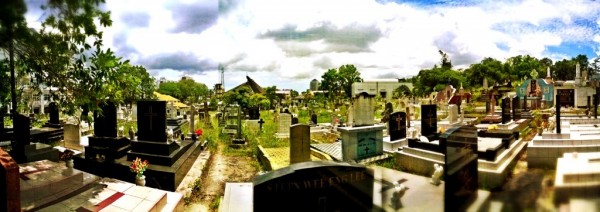
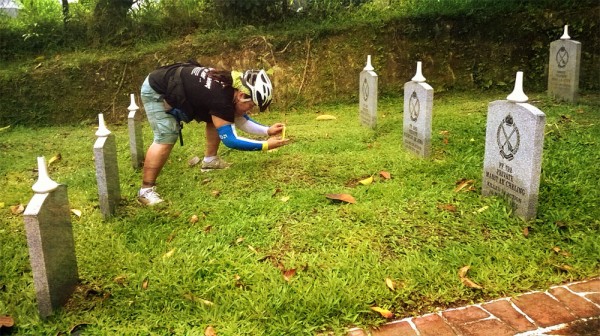
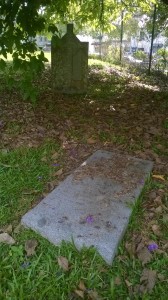
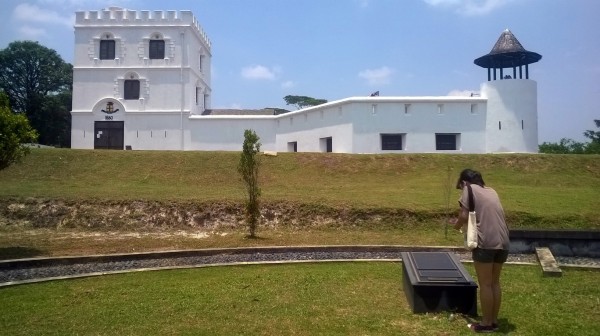







 Genealogy Discussions
Genealogy Discussions Genealogy Projects
Genealogy Projects Popular Genealogy Profiles
Popular Genealogy Profiles Surnames
Surnames The Geni Blog
The Geni Blog The World Family Tree
The World Family Tree